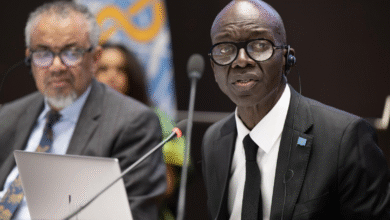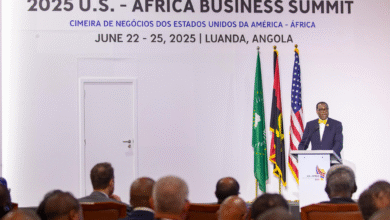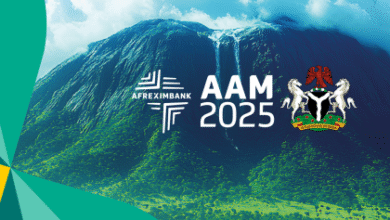African Development Bank Annual Meetings : “Africa will remain the second fastest growing region”
Analysis of the continent's "growth prospects," an assessment of Adesina's years, and the presentation of the Institution's new strategy... The latest Annual Meetings of the African Development Bank were not lacking in interest.

By the editorial team
The recent Annual Meetings of the African Development Bank (AfDB) were marked by crucial discussions about the economic future of the African continent. In Nairobi, Kenya, the Institution presented its latest annual report on « Africa’s Economic Outlook. » According to this report, Africa remains resilient despite numerous global economic challenges. In 2024, 41 African countries are expected to experience higher growth rates than in 2023. The report describes Africa’s growth potential as « remarkable. » It states: « In 2024 and 2025, the continent will maintain its rank as the second-fastest growing region, after developing Asia, as it held in 2023. » Akinwumi Adesina emphasized the importance of addressing governance and natural resource management issues to maximize this potential: « Africa’s future is promising, but we must ensure that we address governance, transparency, accountability, and management of our natural capital. »
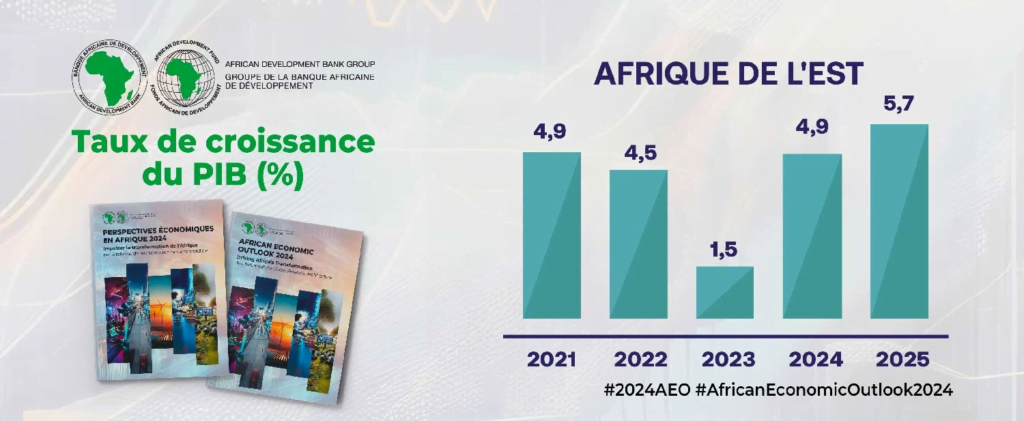
In detail, the report reveals varied growth across regions. East Africa remains at the forefront, with rapid growth expected at 4.9% GDP increase in 2024. Central Africa will see growth shift from 4.3% in 2023 to 4.1% in 2024, improving to 4.7% in 2025. West Africa’s growth will also accelerate, from 3.6% in 2023 to 4.2% in 2024, consolidating at 4.4% in 2025. Conversely, in North Africa, growth is expected to decrease from 4.1% in 2023 to 3.6% in 2024, before rebounding to 4.2% in 2025. Southern Africa will see a slight growth increase, from 1.6% in 2023 to 2.2% in 2024, strengthening to 2.7% in 2025.
Transforming the global financial architecture
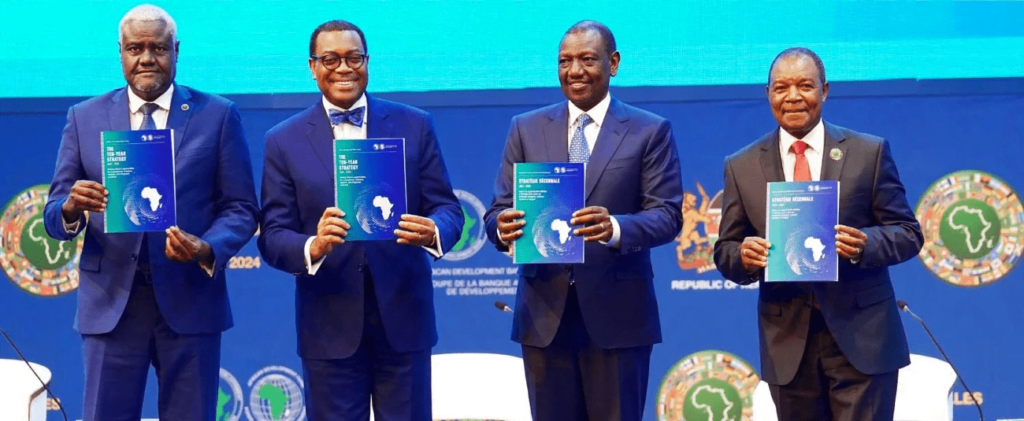
This event was once again an opportunity to advocate for transforming the global financial architecture. In this regard, the theme of the Africa Economic Outlook 2024, « Driving Africa’s Transformation: The Reform of the Global Financial Architecture, » highlights the need to give Africa a stronger voice in international financial institutions. The report calls for a revamp of the global financial architecture to better meet Africa’s needs. « Let’s be clear. In seeking to transform the global financial architecture, Africa is simply asking for a fair share of access and availability of resources to leverage its vast economic opportunities. »
The report proposes reforms such as mobilizing private sector financing, simplifying the global climate finance architecture by improving coordination and facilitating access to climate finance, reforming multilateral development banks to provide large-scale long-term concessional financing, streamlining debt resolution mechanisms, accelerating debt restructurings, and ensuring sustainable debt management. Additionally, it recommends strengthening domestic resource mobilization by improving fiscal policies and public finance management.
Assessment of the Adesina years
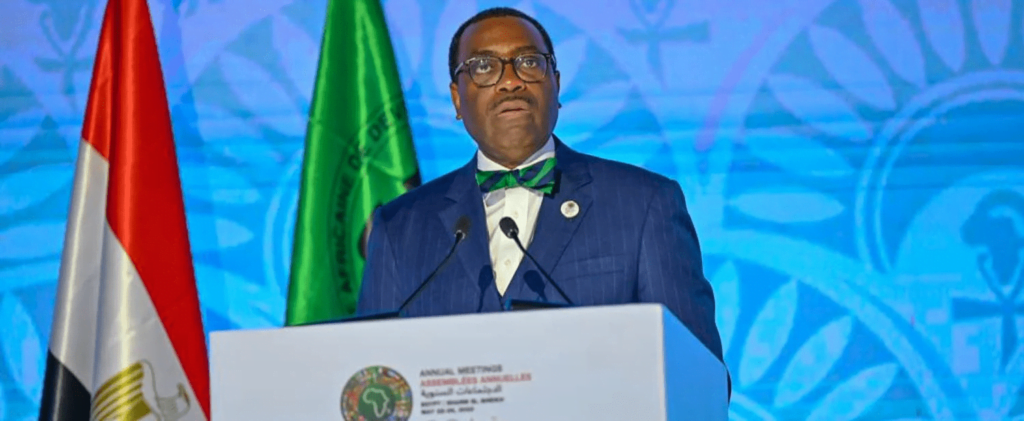
This was also an opportunity for the Institution’s president to take stock of the Institution, which this year marked its sixtieth anniversary. « 60 years of making a difference. » And to reflect on his two terms at its helm.
With $200 billion invested in development projects across the continent since its creation in 1964, the African Development Bank Group is leading the charge to transform Africa’s development landscape in its role as a solutions bank. As a sign of support for the Bank’s efforts, President Ruto announced that Kenya would spend $100 million over the next three years to increase its stake in the African Development Bank, Afreximbank, and the Eastern and Southern African Trade and Development Bank (TDB). Additionally, he announced a $20 million commitment to the African Development Fund, the Group’s concessional financing window, « to demonstrate Kenya’s confidence [in the Fund]. »
Since his election in 2015, Adesina has implemented the « High 5 » strategic priorities aimed at transforming Africa: Light up and power Africa, Feed Africa, Industrialize Africa, Integrate Africa, and Improve the quality of life for the people of Africa. These initiatives have led to significant advancements, particularly in energy access, food security, and industrial development.
« In 2023, our financing amounted to over $10 billion, spread across all our High 5 priorities, » he said, adding: « Over the past nine years, we have invested well over $50 billion in infrastructure projects across the continent, by far the largest investment of any bank or multilateral development institution. »
The president enumerated several innovative initiatives illustrating the Bank’s role as a catalyst for change, driving Africa’s transformation through record investments and partnerships. He highlighted the Alliance for Green Infrastructure in Africa (AGIA), a $10 billion innovative partnership with Africa50 and the African Union, aimed at accelerating the development of sustainable infrastructure projects. This initiative is intended to spur the continent’s transition to a greener and more resilient future. Adesina also emphasized the Bank’s commitment to supporting the digital economy, citing the $618 million i-DICE program in Nigeria, which will create six million jobs and inject $6.4 billion into the economy.
He stressed the importance of investing in African youth: « We must ensure we invest in our youth, their skills, talents, entrepreneurship, and provide them with the tools. »
A new « ambitious » strategy
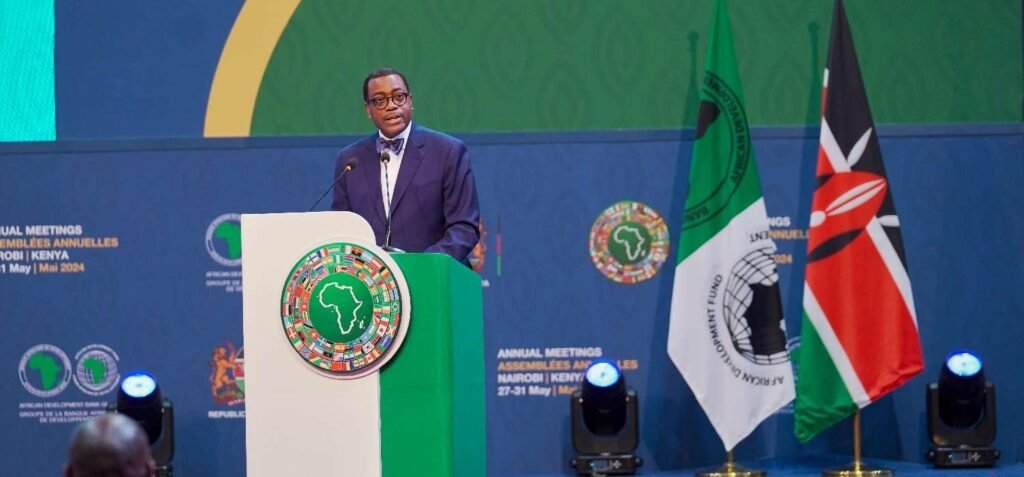
Finally, the AfDB’s new 2024-2033 decade strategy was revealed. « Ambitious, » it aims to transform the continent with a focus on two key objectives: accelerating inclusive green growth and fostering prosperous and resilient economies. « The decade strategy outlines how the Bank will invest in Africa’s best asset: its dynamic youth. Africa’s population, the youngest and fastest-growing in the world, offers the continent an unprecedented demographic opportunity. »
The strategy also highlights essential cross-cutting priorities such as promoting gender equality, adapting to climate change, supporting fragile states, and promoting good governance. Adesina stated: « The kind of resilience we talk about cannot happen if we do not address climate change issues. »
« As the leading development finance institution in Africa and a solutions bank in Africa, we are fully aware that the next decade will be decisive in transforming the continent. Therefore, as we celebrate 60 years of making a difference in countries and in the lives of the people of Africa, we remain resolute in our determination to accelerate the support we provide to African countries. »
« African integration is everyone’s business »
During the Annual Meetings, Akinwumi Adesina also proposed ten innovative ideas to strengthen regional integration and development in Africa. These included developing regional corridors, improving energy access, and investing in the manufacturing sector and the digital economy. « African integration is everyone’s business, » concluded Adesina, emphasizing the importance of regional cooperation.
Consult the 2024-2033 Decade Strategy
Consult the Africa Economic Outlook 2024





